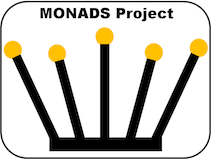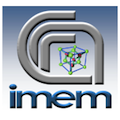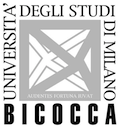About
The MONADS Project
"MOCVD growth and study of chalcogenide NAnowires
for phase change DeviceS"
In the field of non-volatile memories, phase change memories (PCMs), based on chalcogenide materials and almost at a production
stage, promise to be highly competitive with respect to the current Flash technology, offering high data storage, excellent scalability,
high speed switching, long lifetime and low-cost. The project MONADS foresees the synthesis and the study of chalcogenide nanowires (NWs),
deposited by metalorganic chemical vapor deposition (MOCVD), for highly scaled PCM applications.
The use, for the first time, of the MOCVD method, already considered for its potentialities for the scaling down of the PCMs in the
top-down approach, is expected to offer the required scalability for NW-based device fabrication (bottom-up approach) at the industrial
level, as well as high material purity and deposition control. This project investigates different routes for the realization of the
chalcogenide NWs, mainly based on the Vapor-liquid-solid (VLS) process, activated by the presence of metal catalysts species on the
substrate surfaces. In order to assess the conditions leading to ordered arrays of NWs with proper density and shape, the deposition
mode are studied on both flat and patterned substrates (templates). In order to obtain different configurations, from the uniform layer
of metal catalyst, to nano dispersed catalyst seeds, to proper templates into which the chalcogenide can be deposited with or without
the presence of the catalyst, the substrates are processed before the chalcogenide deposition.
The electronic properties are studied in terms of the phase formation/crystallization dynamics, the NW structural, chemical,
compositional and size effects, also carrying out local area measurements on single nanostructures. Post-growth processes are devoted
to the realization of NW-based test structures, whose behavior as potential memory devices is evaluated, along with their failure
tests. Experimental work is supported by theoretical modeling and simulation, aimed at providing information on the structure of the
amorphous phase and on the mechanisms underlying the phase change and its dependence on the shape and dimensions of the nanostructures.
The final goal is to identify the key parameters to obtain controllable NW-based test structures, leading to an innovative scaled PCM
cell design.
The MONADS Project is supported by Fondazione CARIPLO
The research consortium is composed by the following 3 partners:
- CNR-IMM, UnitÓ di Agrate Brianza, Laboratorio MDM, Agrate Brianza (MB) - Italy (Leading unit)
- CNR-IMEM, Parma - Italy
- UniversitÓ di Milano Bicocca, Dipartimento di Scienza dei Materiali, Milano - Italy




